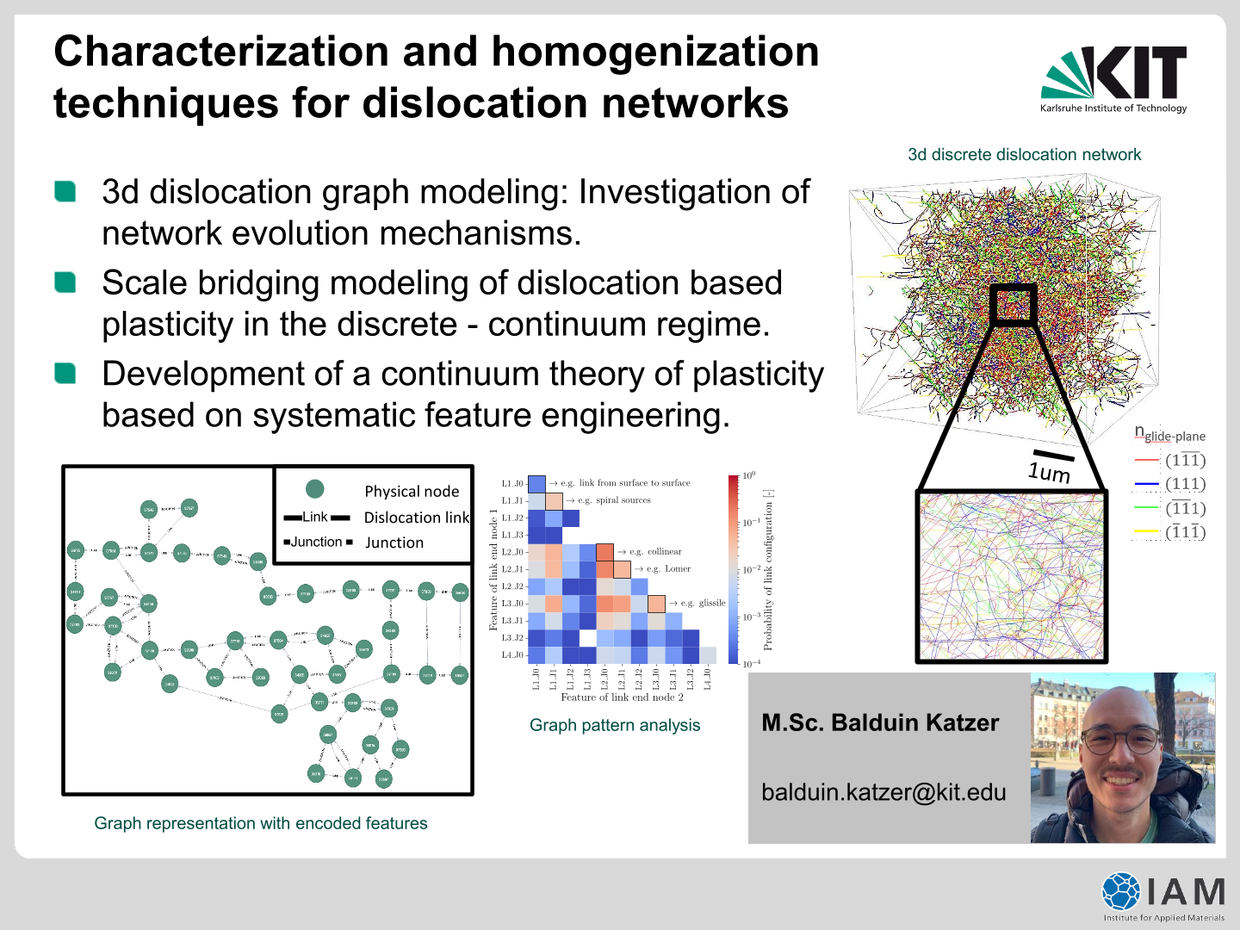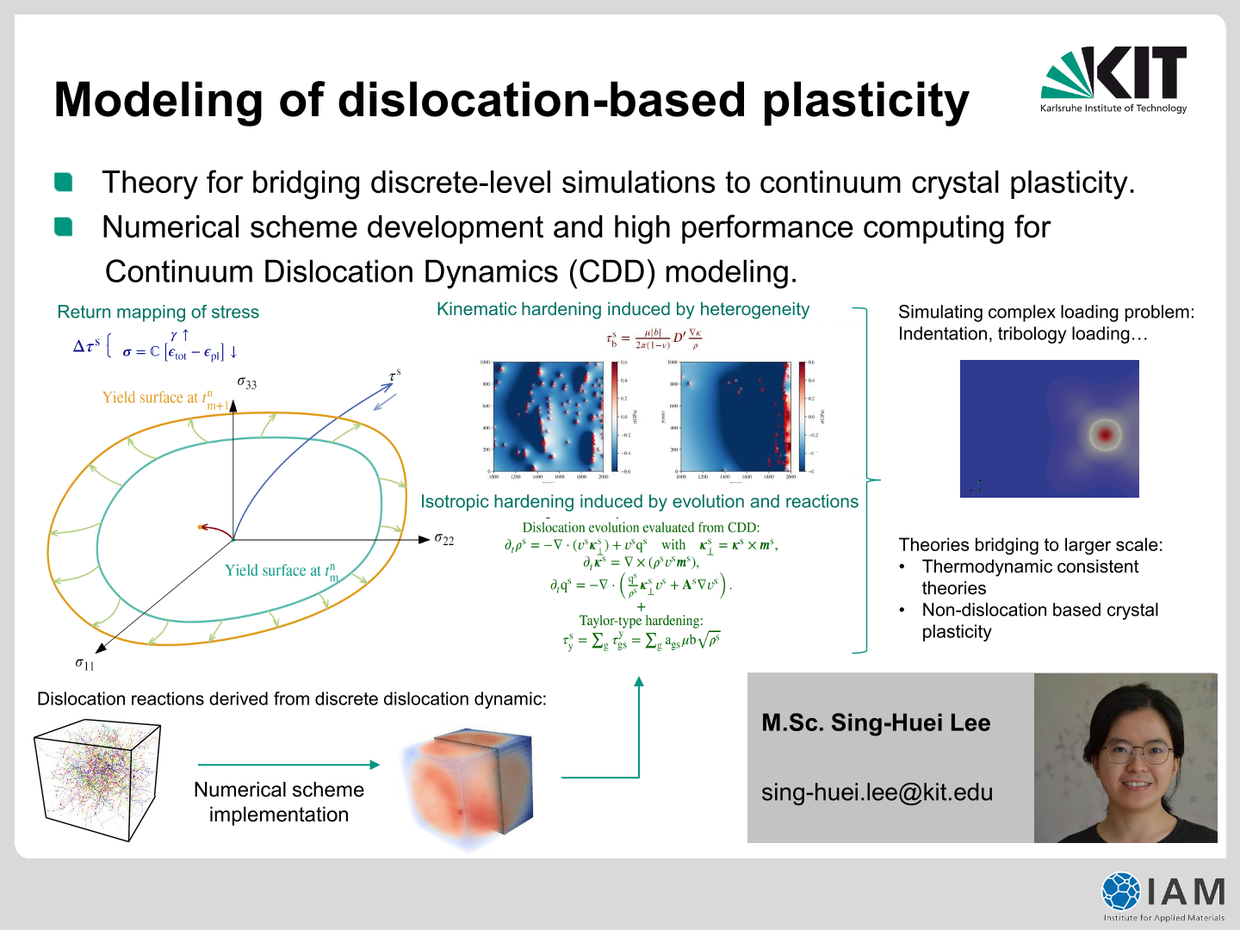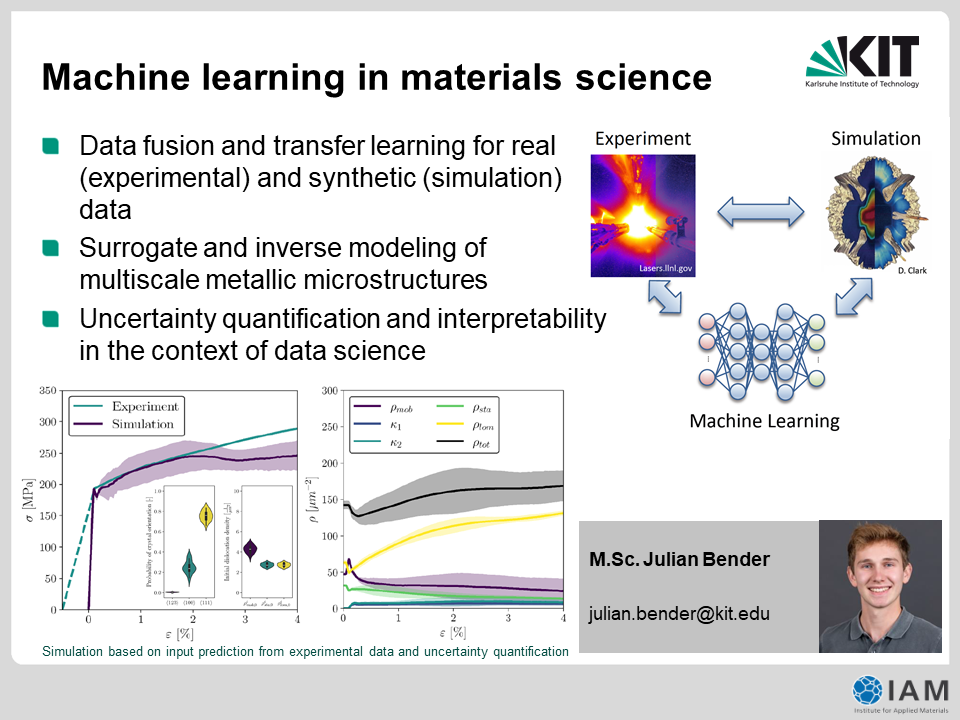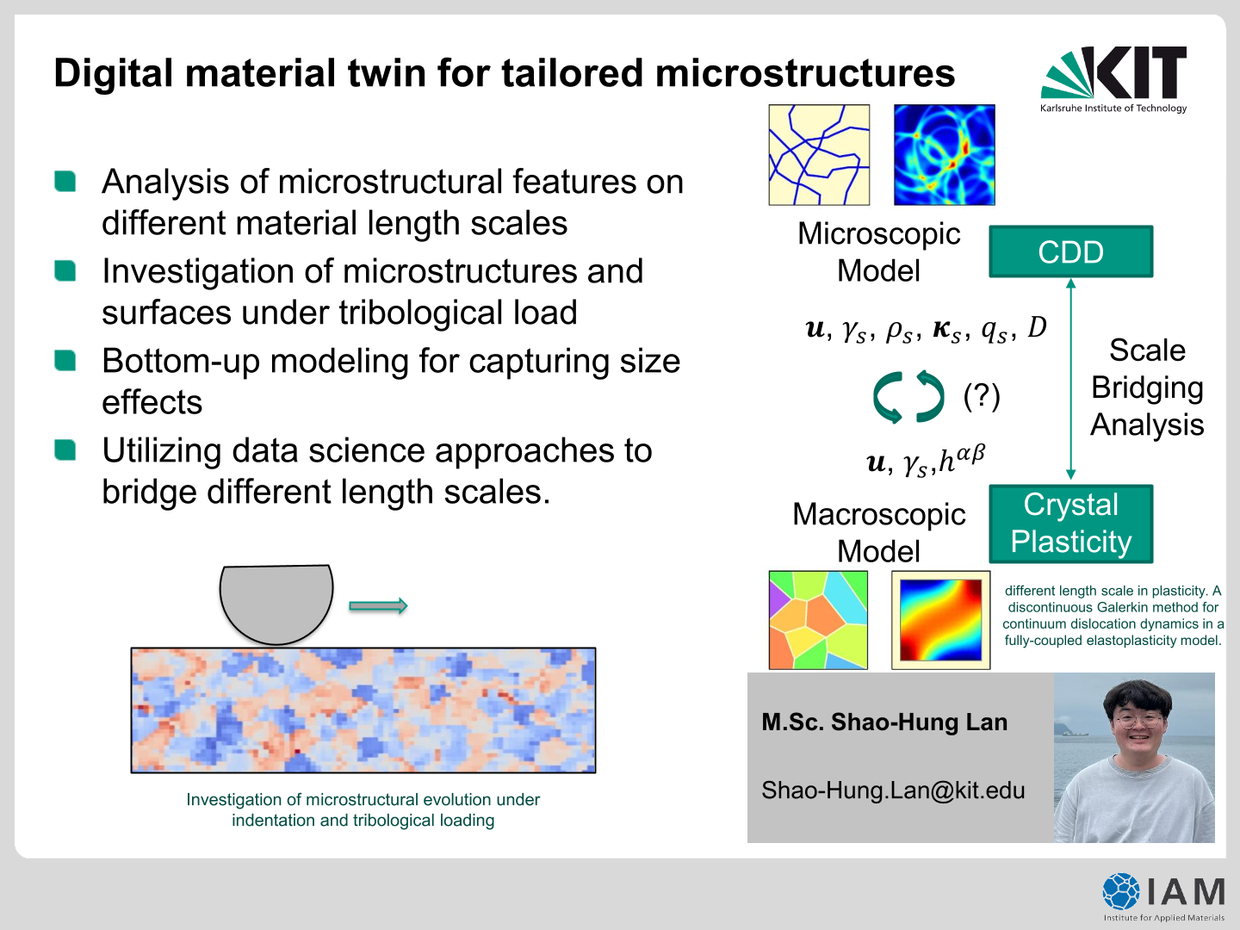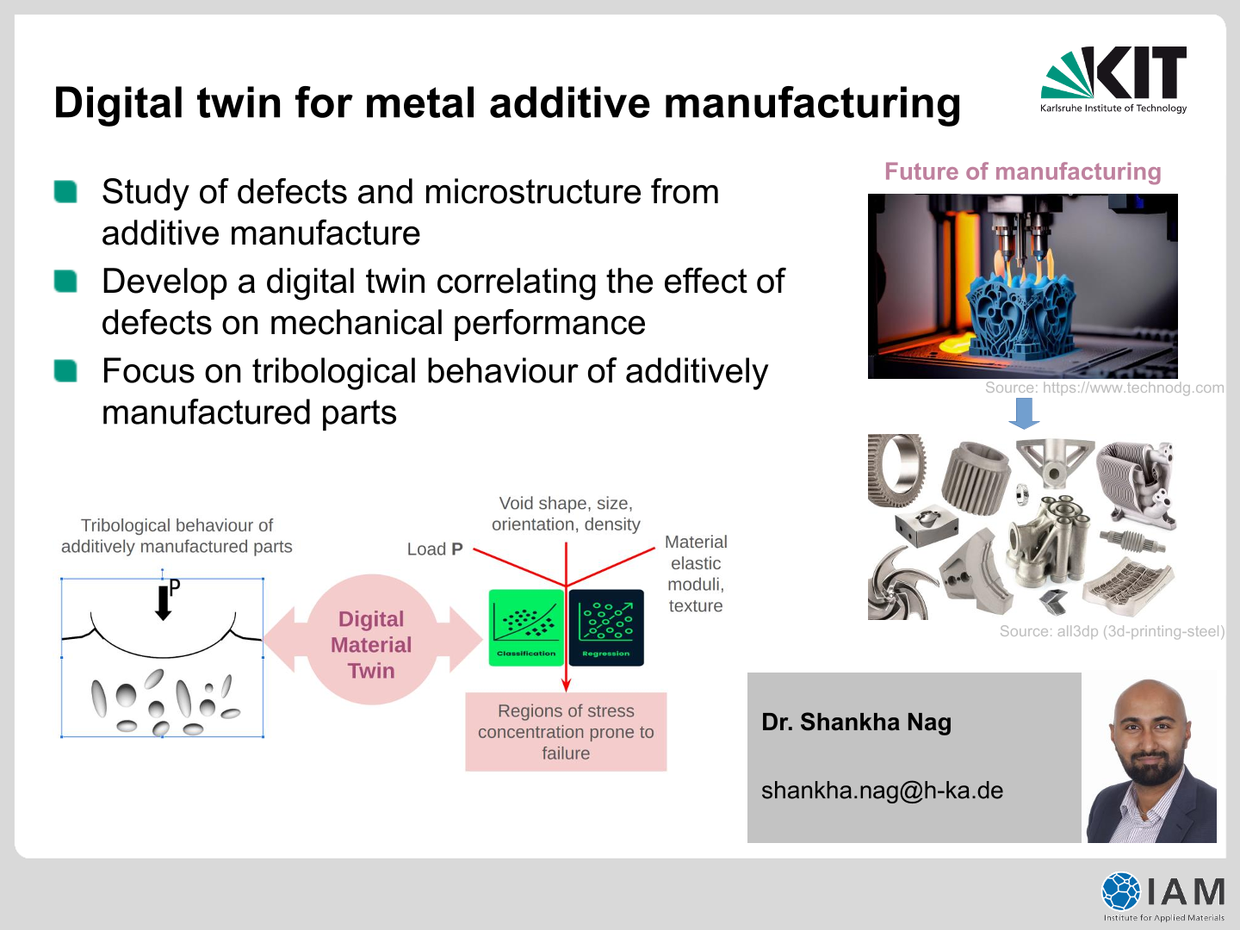Scale bridging computational methods

Kontinuumstheorien zur Plastizitätsmodellierung können auf eine lange Tradition bei der Vorhersage mechanischen Verhaltens von Bauteilverformungen zurückschauen. Dabei gibt es eine große Vielzahl von klassischen Kontinuumsmodellen, die in der Lage sind makroskopisch beobachtbare Größen - wie plastisches Fließen oder Verfestigung - vorherzusagen, nicht aber beispielsweise größenabhängige Verformungsaspekte im (Sub-)Mikrometerbereich ohne zusätzliche ad-hoc Annahmen. Wir beschäftigen uns mit einer neuartigen Versetzungsdichte-basierten Kontinuumstheorie (CDD - "Continuum Dislocation Dynamics"), die viele essenzielle Informationen von Versetzungssystemen enthält, ohne jedoch die Effizienz einzubüßen, die einer kontinuierlichen Beschreibung zu eigen ist. Hierzu setzen wir auf klassische Homogenisierungsverfahren aber auch auf neue Wege wie "Machine Learning" oder Graphen-theoretische Verfahren. Dabei ist eines unserer Ziele, reale Mikrobauteile zu simulieren und im Vergleich mit diskreten Versetzungsdynamik-Simulationen und Experimenten neue Aufschlüsse über mögliche Mechanismen plastischer Verformung zu erhalten.


